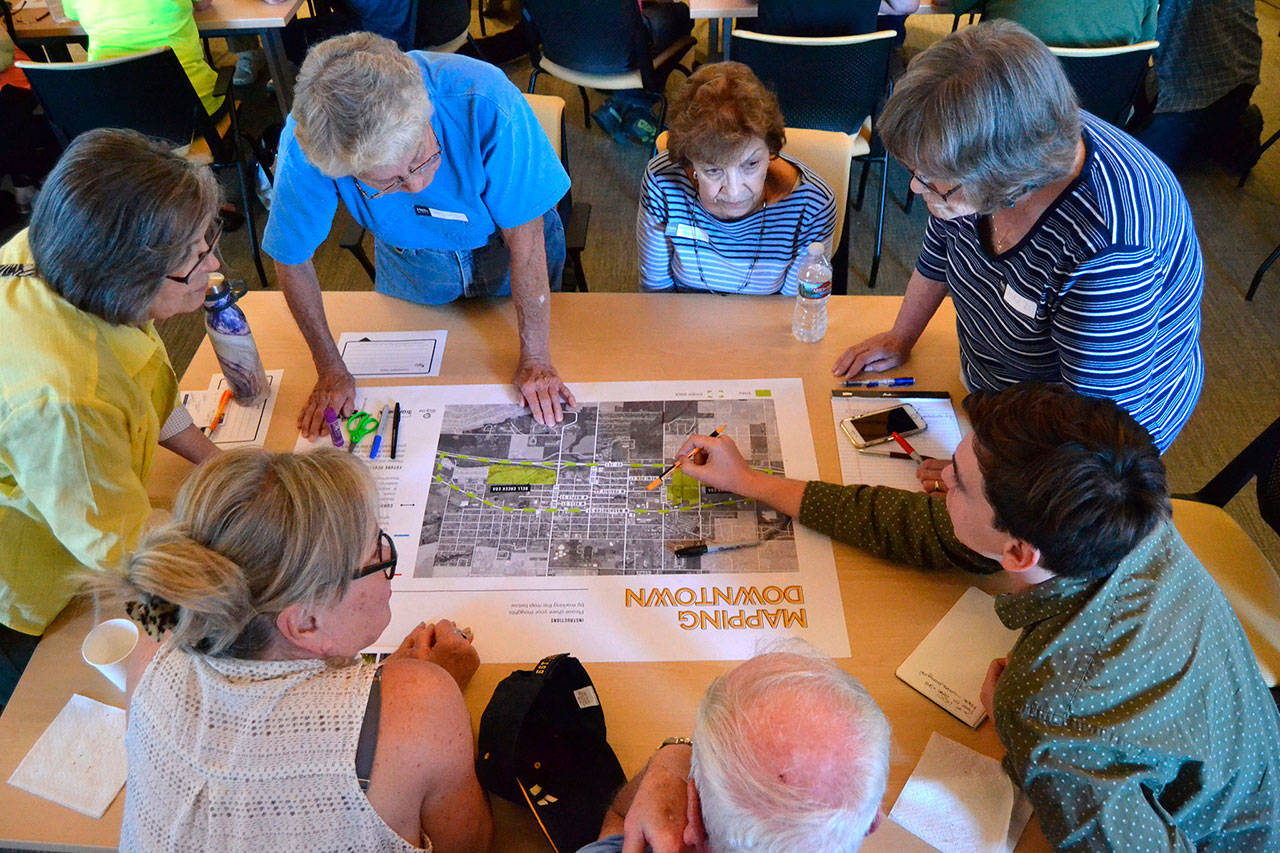SEQUIM — Sequim’s city streets could see improved accessibility, lighting, sidewalks and more as part of the South Sequim Complete Streets Project.
Consultants for the city of Sequim plan to bring a draft design for the plan to improve east-west connections south of Washington Street to the city council by mid-2020.
Public discussions began in late August between residents and consultant firm Framework at a design charrette — a planning session — over three days. Ideas were gathered about creating better connections as well as possible issues between the city’s wide-ranging development zones called Economic Opportunity Areas.
Jeff Arango, director of planning for Framework, told council members Oct. 14 that his staff plans to host another open house in the winter or spring of 2020, followed by a draft design presented in spring 2020 and tentative adoption in the summer by the city council.
If a plan is adopted, the council could direct staff to seek such improvements on city streets as adding lighting, increasing accessibility, installing sidewalks and bike lanes and improving connectivity between neighborhoods.
“This project’s not about pumping a bunch of traffic through a neighborhood,” Arango said. “We’re trying to find that balance.”
Arango said if companies begin to develop in the Economic Opportunity Areas, “it could create bigger problems for neighborhoods if improvements aren’t made.”
From his team and neighbors’ observations, Arango said “streets are very different from one to the next.”
“Some have narrow sidewalks. Some have none,” he said. “(It is) fairly universal that most streets are much wider than they need to be.”
Arango said some streets south of Washington Street offer parallel parking that is not being used, so they appear wider.
“There’s a lot of informal parking happening because the distinction between the road and private properties is not very evident,” he said.
In some of the models Framework presented, street improvements could feature angled parking, two-way bike lanes and landscaping to separate pedestrians and bicycles from vehicles.
Along South Third Avenue, Arango said two-way bike lanes and sidewalks would be a “great concept for providing better access to the schools.”
The cost of improving city streets could be expensive though, so Arango suggested temporary improvements such as painting protected bike lanes to see if people like the idea.
Hemlock Street is a wide street that could support a temporary bike lane to test the concept, he said.
Feedback
Council member Ted Miller complimented Arango’s research, but also said he was concerned that participants were mostly from Prairie Street.
“We’re evaluating it on a technical level as well,” Arango said. “From our perspective, we want to make sure we have the right balance.”
He said there doesn’t need to be a trade-off between concerns of residents and city staff.
“I think we can satisfy the residents, and the goals for development in that area,” Arango said.
Speed bumps aren’t something he looks to add either.
“We’re not fans of traffic bumps,” Arango said. “In our view, that’s a mitigation for a poorly designed street.
“Hopefully we don’t have to do those harsh traffic calming measures. You are in a residential neighborhood. Hopefully the street can work for everyone.”
When asked about right-of-way issues and the spacing of the street, Arango said he felt residents understood that improvements could come closer to homes and yards.
“As we start to develop this plan more, I was expecting to get more concern than there was,” he said.
Council member Jennifer States said that overall, she felt the project was a “great example of the community coming together to talk about their concerns and working together on a shared vision.”
Sequim public works director David Garlington said that previously Prairie Street seemed like a good connection point between the Economic Opportunity Areas, but community concerns diverted the city from focusing strictly on it.
Garlington said increasing and easing flow of east-west traffic has been discussed for about seven years, and it’s been in the city’s Transportation Master Plan, six-year Capital Improvement Plan and Comprehensive Plan.
For more information about the project, visit sequimcompletestreets.org, or contact city project engineer Dave Nakagawara at 360-582-2479.
________
Matthew Nash is a reporter with the Olympic Peninsula News Group, which is composed of Sound Publishing newspapers Peninsula Daily News, Sequim Gazette and Forks Forum. Reach him at mnash@sequimgazette.com.

